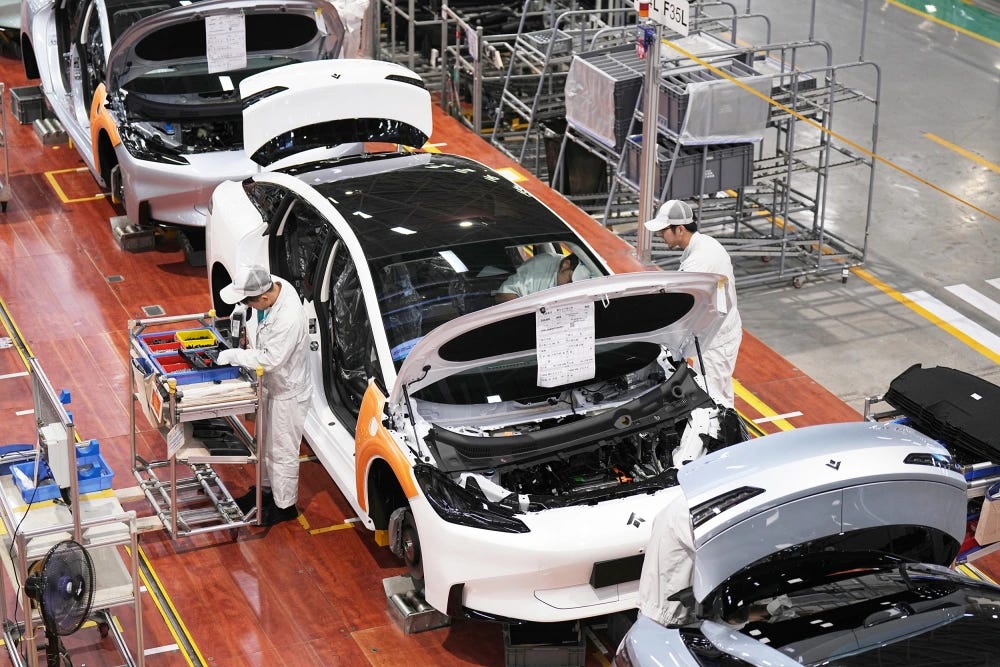Trump's Tariff Threats Begin to Impact Chinese Manufacturers and U.S. Consumers
Chinese Exporters Explore Alternatives to U.S. Market, Raising Prices for American Consumers and Moving Production Overseas
As President Donald Trump prepares to impose a new round of tariffs, Chinese manufacturers are bracing for the effects, with many considering shifting production to other countries, passing on higher costs to U.S. consumers, or even abandoning the U.S. market altogether.
Though Trump’s proposed 25% tariffs are set to target Canada and Mexico initially, China remains a key focus for the administration. Following reports that the U.S. may delay some of the tariffs until March 1, the White House confirmed that Trump will proceed with the implementation of 10% tariffs on Chinese imports beginning Saturday. During his campaign, Trump had suggested tariffs of 60% or higher on Chinese goods.
Trump’s stance on tariffs is rooted in his belief that they will bolster U.S. manufacturing and job growth. While he uses tariff threats to negotiate policy gains, the move could also raise prices for U.S. consumers, affecting products ranging from electronics to furniture.
In China, new duties could severely impact exporters who depend on the U.S. market. CNBC recently visited Guangdong province, a key manufacturing hub, where factory owners are preparing for the fallout. Here are the key developments from their findings:
Rising Prices for U.S. Consumers
To prepare for Trump’s tariff threat, Harry Li, a furniture seller, is ramping up shipments to the U.S., stockpiling products in warehouses to avoid future tariff costs. He anticipates raising prices by up to 10% regardless of the final tariff structure.
Li’s company, Tianyiled, exports four out of five of its large furnishings, including tables, to the U.S. To mitigate risks, he is stockpiling inventory in the U.S. and waiting for more clarity on Trump’s tariff plans.
Coping Strategies in Chinese Factories
To avoid tariffs, Li is also exploring other strategies, such as focusing on products not targeted by the tariffs. In Guangzhou, water purifier manufacturer Zheng Yu is planning to move some of his production outside China to countries like Vietnam, Malaysia, and Mexico. His company, Tesran, is also considering Dubai, though it would come with a 30% higher cost.
Zheng is in discussions with his U.S. clients to share the burden of the tariffs, hoping to split the additional costs. For him, the tariffs serve as a final push to move production away from China.
Chinese Manufacturers Face a Breaking Point
Across Guangdong, many businesses are facing a critical tipping point, where continuing to sell to the U.S. may no longer be feasible. Depending on the industry and profit margins, companies have identified a tariff threshold between 20% and 60% that would force them to stop exporting to the U.S.
Zheng Yu expressed concern about the possibility of further tariffs, especially if Trump implements a broader tariff package, which could raise costs for production in Dubai. At that point, he suggested that his company might be forced to cease exports to the U.S. altogether.
In Guangzhou, Leng Rong, who manufactures skin care products, also faces significant challenges after previous tariffs of over 20% were imposed during Trump’s first term. These duties caused substantial losses for his company, Keni. With slim profit margins, Leng is uncertain whether he can pass the higher costs onto his customers in the U.S.
Leng reflected on the shifting dynamics, saying, “In the past, we all felt the U.S. market was the greatest market that everyone wanted to sell to. But with all the uncertainties and unfriendly decisions, the U.S. is less attractive now. It’s a real pity.”
The evolving tariff situation is reshaping trade relations between the U.S. and China, with manufacturers in both countries grappling with new economic pressures and seeking alternatives to mitigate the impact on their bottom lines.


